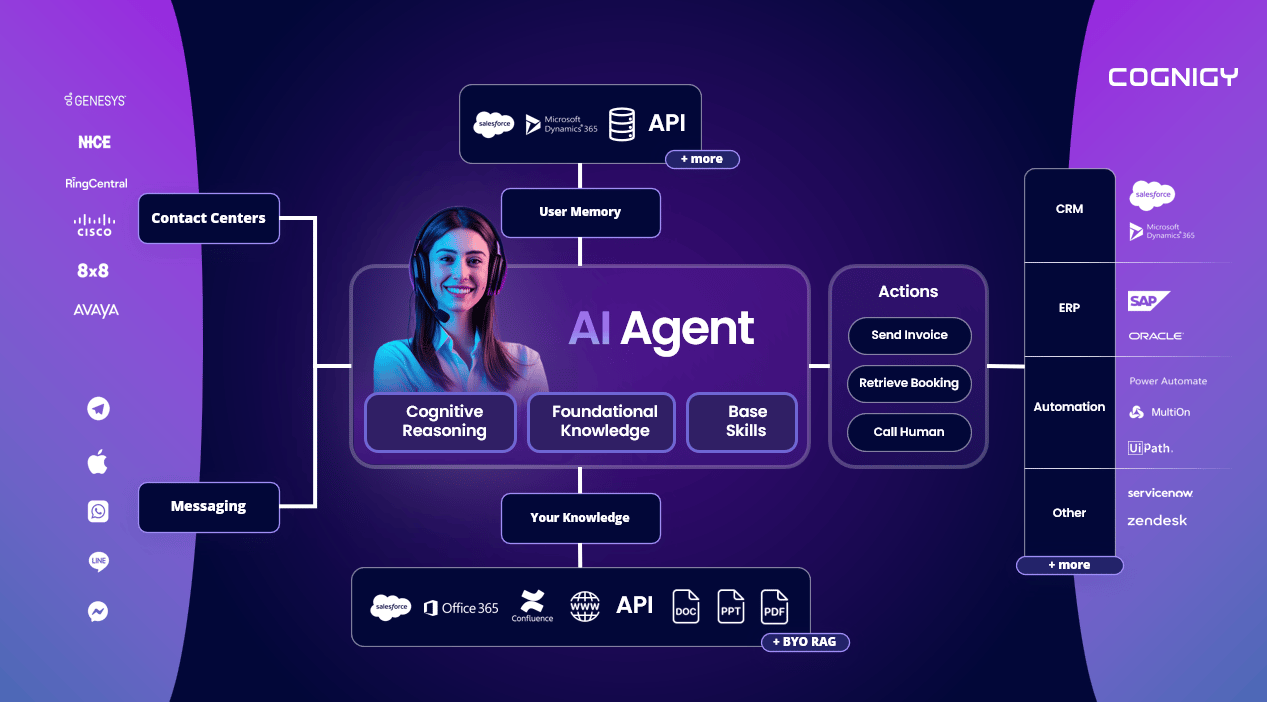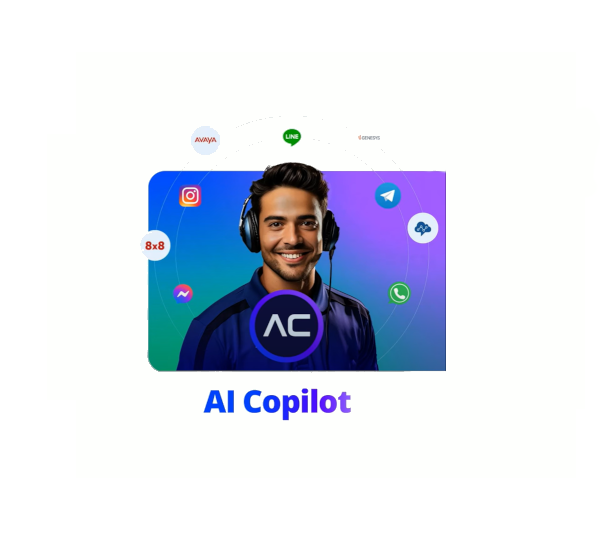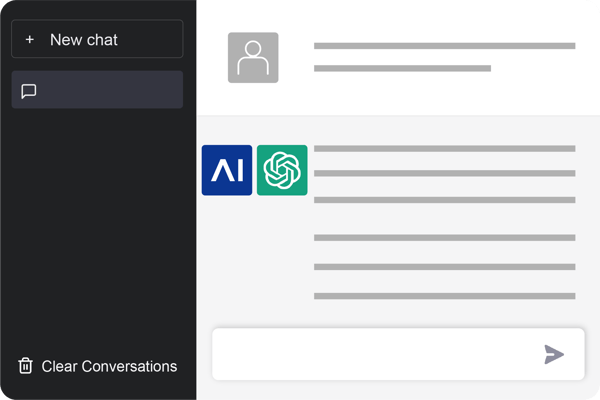How Does Agentic AI Work?
An AI Agent acts in a similar fashion to human agents. They listen, reason, act, and respond much the same way as humans. To achieve this level of autonomy, Agentic AI agents utilize a combination of NLU-driven Conversational AI and LLMs to act within the freedoms you give them, drawing initial learning from databases and networks and then continuing to learn ‘on the job,’ adapting to customer behavior.
Unlike a conventional bot which relies on predefined paths, Agentic AI will break requests down into actions and use whatever tools it requires to carry them out as efficiently as possible.

The graphic above demonstrates the difference between a more linear intent-driven AI and an Agentic AI workflow, but we need to dig deeper into the anatomy of an Agentic AI agent to show how capable they are of performing this type of task breakdown. To achieve
The Anatomy of Agentic AI
To understand how Agentic AI works, you need to see the layers involved in how the AI Agent achieves this unparalleled level of autonomy. Let’s take a closer look at the layers that make up Cognigy’s bespoke solution:
Composite AI with NLU and LLMs
The foundational layer of any Agentic AI system is an LLM, used in combination with NLU-driven Conversational AI which allows it to understand language and everyday user interactions while maintaining a high degree of flexibility but the ability to follow strict processes where required Being technology and vendor agnostic, Cognigy offers AI Agents that utilize LLMs such as OpenAI, Azure, Anthropic, or any other you may chose including your own.
CX Finetuning
For Cognigy’s Agentic AI Agents, an additional bespoke layer is added above the LLM, which utilizes years of CX experience to cater to the unique requirements of enterprise contact centers, providing omnichannel connectors, contact center connectivity, enterprise-grade security, and control, among others.
Enterprise Knowledge
Every AI Agent is different and has a specific role. Though Agentic AI agents use LLMs for general foundational knowledge, they must also be trained on data specific to your organization and sector, such as FAQs, policy documents, and product information.
AI Agents can be trained at both the agent and job levels. Information provided at an agent level gives it access to general knowledge regardless of what task it performs – such as knowing your company’s policies to keep every interaction compliant with certain rules or expectations. At a job level, you can provide specific skills or information needed for an agent to perform a dedicated task.
For example, an airline company can train an AI Agent with comprehensive FAQ documentation to have it act as a customer-facing service role aimed at answering popular questions.
Skills & Actions
For an AI Agent to be truly autonomous, it must be able to carry out tasks without having to ask humans to intervene. Agentic AI allows you to give an AI Agent specific skills related to tasks, such as creating a support ticket or looking up a customer’s CRM entry. In enterprise organizations, this often means creating a team of AI Agents trained to complete specific tasks. If the agent can’t solve a customer’s request, it can hand the case to another AI Agent who has the necessary skills.
Progressive Cognitive Reasoning
This is, perhaps, the most important ‘layer’ for understanding how Agentic AI works. It refers to how an AI Agent can evaluate a user’s intent based on their input, read contextual clues, and consult all of its available knowledge to determine the best response or action. It breaks user needs down into logical goals and will plan the most efficient path to resolution.
Memory
The AI Agent comes equipped with memory functions that allow it to remember information within a conversation (short-term memory) and also to recall information across multiple interactions (long-term memory). This additional layer of memory helps the AI Agent personalize interactions around a user’s historic preferences and needs in addition to its integration with your CRM and accompanying data.
Safety
A final, additional safety layer can be added to an AI Agent to ensure its behavior stays within predetermined guardrails and protects it against jailbreak attacks and other malicious activity.

In isolation, Agentic AI agents all share the power to reason through tasks. Only when presented as part of the Cognigy.AI framework, however, can the AI Agent come equipped with immediate multilingual, omnichannel capabilities and 100s of pre-tested integrations.

.png?width=60&height=60&name=AI%20Copilot%20logo%20(mega%20menu).png)




.png?width=600&height=600&name=Knowledge%20AI%20Feature%20image%20(2).png)














